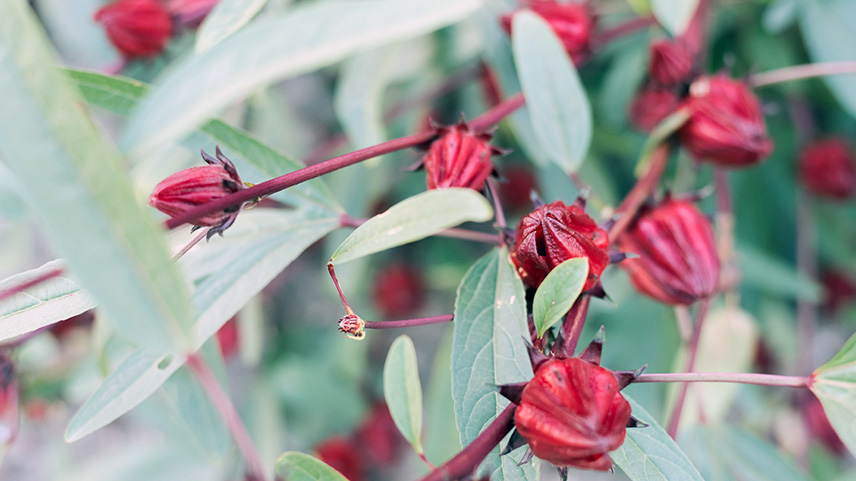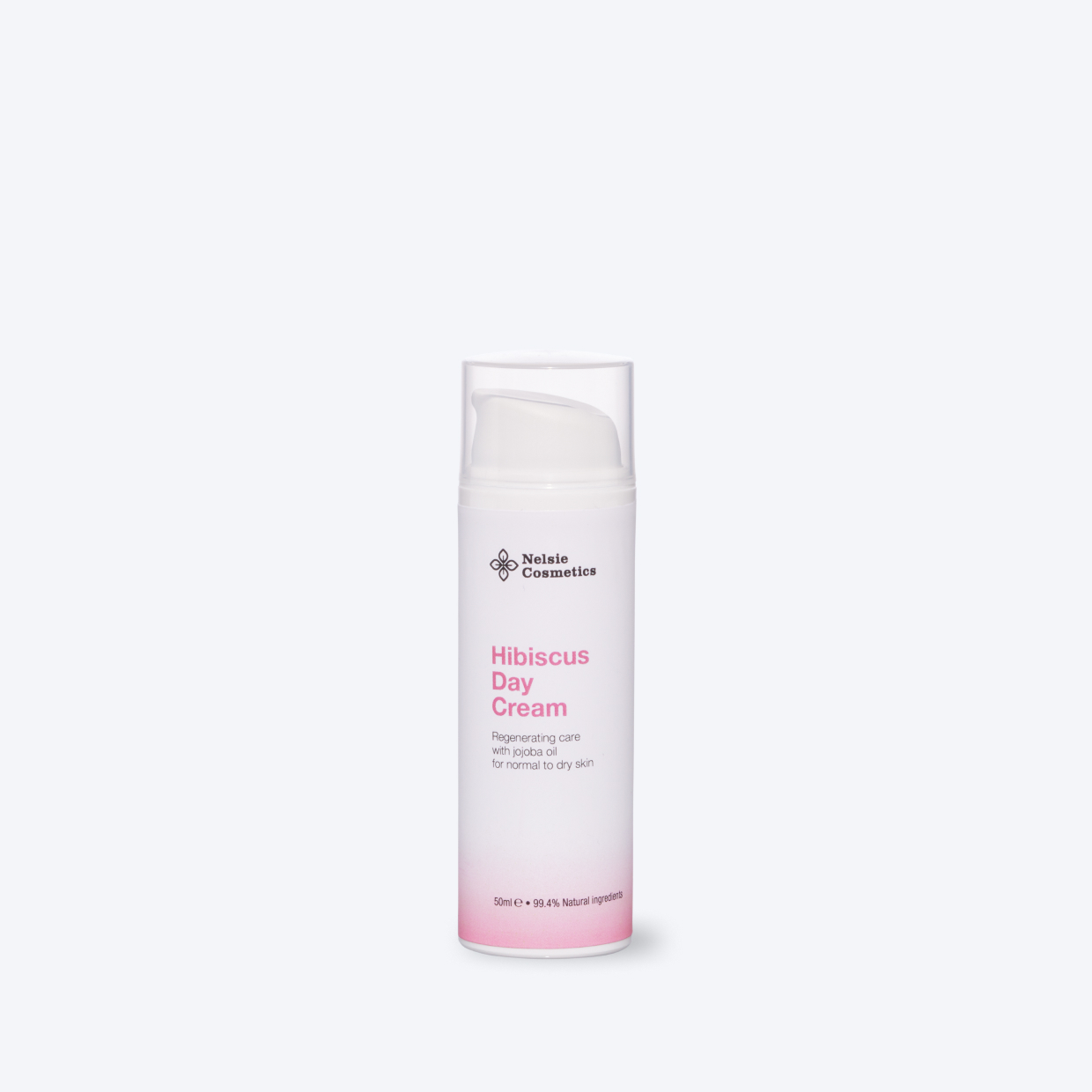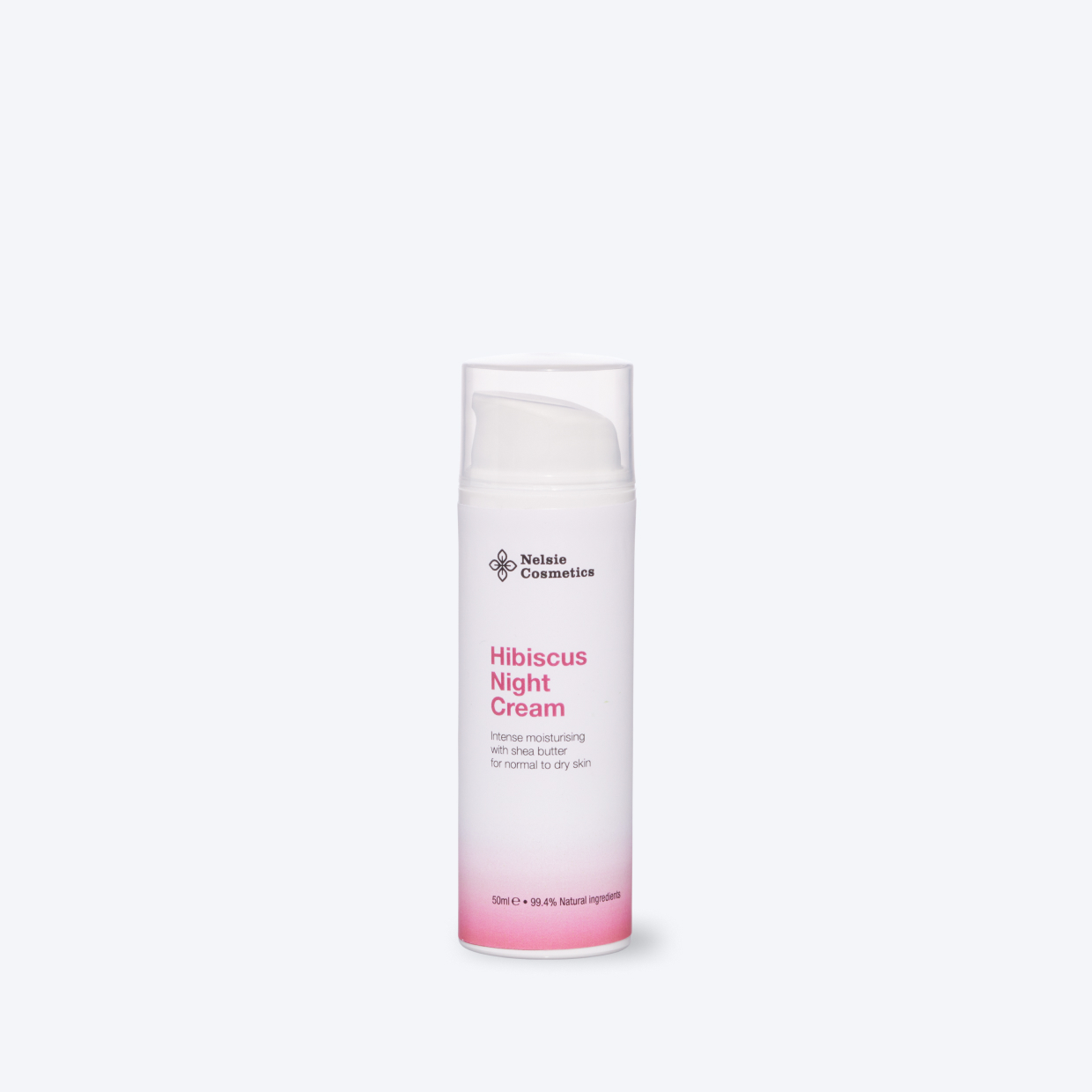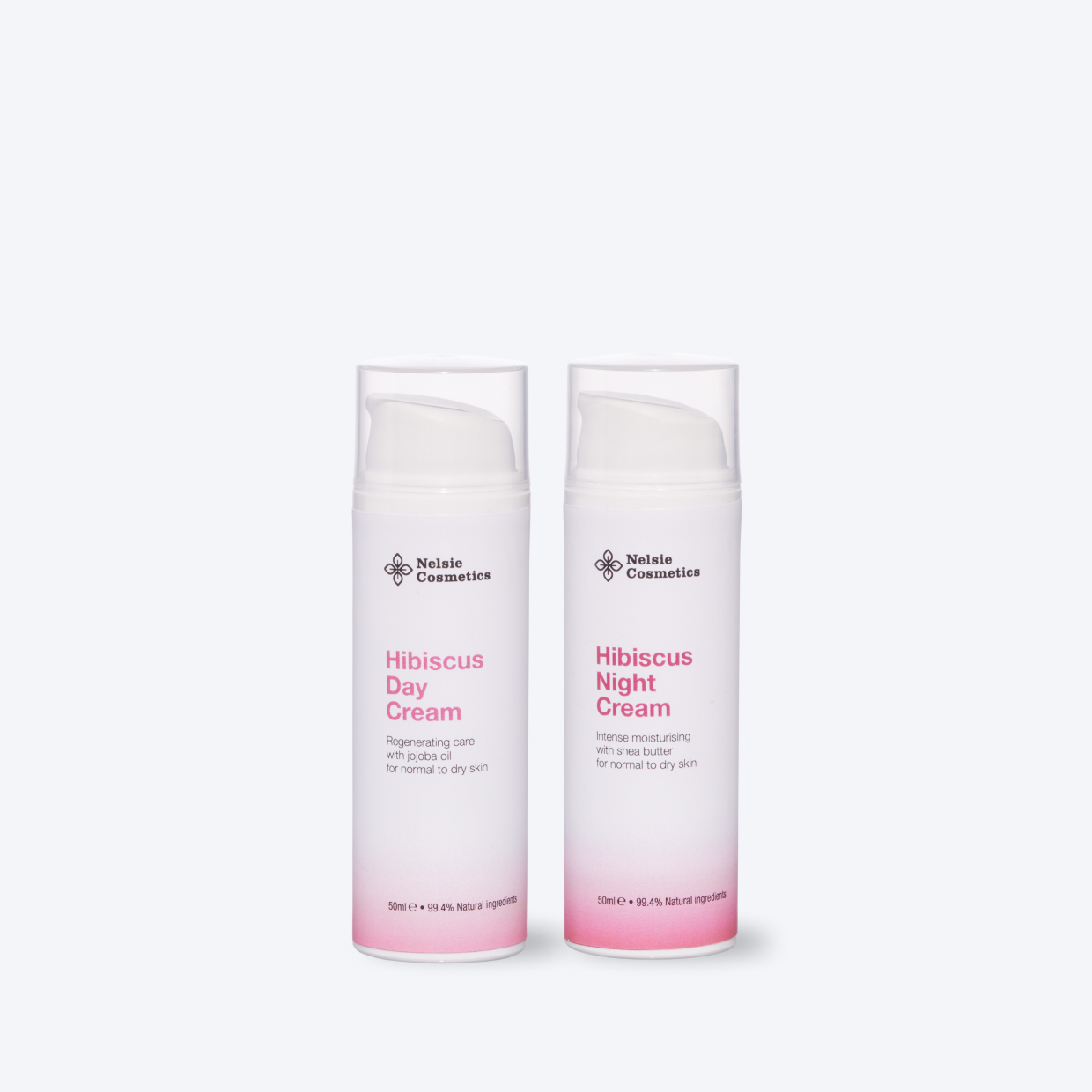Without doubt one of our favorite plants. In our family, hibiscus is used every day to prepare all kinds of beverages, enjoyed hot, cold or even iced. But hibiscus isn’t just a delicious tea, it’s also an incomparable cosmetic ingredient, a powerful antioxidant that contributes to the well-being and health of our skin and hair.
Hibiscus is a genus of plant with several hundred species. The one we’re interested in is Hibiscus sabdariffa or roselle, known in Africa by many names including bissap, karkadé, folléré and ngai ngai. Native to Angola, this shrub is cultivated in all tropical regions and used in traditional medicines the world over. In Africa, it is used as an antibacterial, blood pressure and fever reducer. The Maya K’iché of Guatemala use it to treat measles. It is widely used in Ayurvedic medicine, particularly for female reproductive disorders, heart problems and blood disorders.

One thing’s for sure: hibiscus significantly stimulates collagen and hyaluronic acid synthesis. What’s more, studies show that the extracts have an anti-inflammatory effect1. Hibiscus is rich in anthocyanin, the colorant that gives it its beautiful dark red color, and is a powerful antioxidant that will stimulate cell regeneration and combat the action of free radicals on skin and hair2 3.
Used as a cosmetic ingredient, hibiscus supports hydration and softens the skin. It contains fruit acids which, when used regularly, make the skin more radiant and even out skin tone. Hibiscus flower extract has moisturizing properties, making it ideal for dry, dehydrated skin. Hibiscus powder is also used in hair care, nourishing and strengthening the hair. Applied as a rinse, it ensures shine and stimulates growth.
Strengthening Hair Rinse
With the following beauty recipe, you can easily prepare your own hair conditioner at home:
Ingredients
- 5 hibiscus flower petals
- 2 tsp turmeric powder
- 1 lt filtered water
- 1 tbsp vinegar
Steps
- Place hibiscus and turmeric in cold water
- Boil for 3 minutes
- Allow to cool
- Add vinegar
- Use lukewarm as a final rinse after shampooing
1 Wang, D.; Nagata, M.; Matsumoto, M.; Amen, Y.; Wang, D.; Shimizu, K. Potential of Hibiscus sabdariffa L. and Hibiscus Acid to Reverse Skin Aging. Molecules 2022, 27, 6076
2 Mossalam, H.H.; Abd-El Aty, O.A.; Morgan, E.N.; Youssaf, S.; Mackawy, A.M.H. Biochemical and Ultra Structure Studies of the Antioxidant Effect of Aqueous Extract of Hibiscus sabdariffa on the Nephrotoxicity Induced by Organophosphorous Pesticide (malathion) on the Adult Albino Rats. J. Am. Sci. 2011, 7, 561–572.
3 Mohd-Esa, N.; Hern, F.S.; Ismail, A.; Yee, C.L. Antioxidant Activity in Different Parts of Roselle (Hibiscus sabdariffa L.) Extracts and Potential Exploitation of the Seeds. Food Chem. 2010, 122, 1055–1060.



